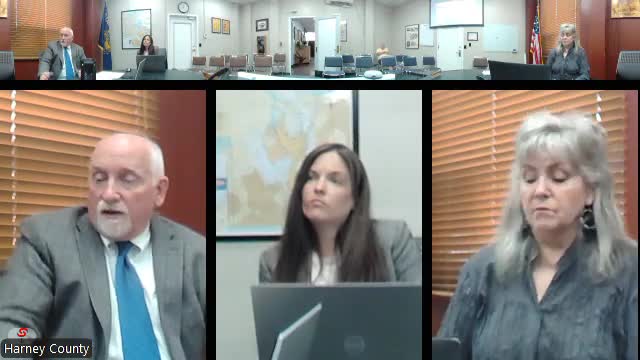Local leaders confront $300 million gap in road funding
September 03, 2024 | Harney County, Oregon
This article was created by AI summarizing key points discussed. AI makes mistakes, so for full details and context, please refer to the video of the full meeting. Please report any errors so we can fix them. Report an error »

During a recent government meeting, discussions centered on critical transportation issues affecting local infrastructure and funding. A key topic was the need for improved public parking areas, particularly for individuals with disabilities, emphasizing the importance of ADA compliance in design and implementation.
The meeting also highlighted a significant funding gap of $300 million for the operations and maintenance of state highways and roads. Local leaders, including Senator Finley and Representative Owens, participated in a roundtable discussion in Ontario, where they addressed the pressing need for sustainable funding solutions. Participants expressed concerns about the increasing wear and tear on highways, particularly in remote areas lacking interstate access, which has led to a rise in traffic on secondary roads.
One proposed solution was to tie gas taxes to inflation, although this suggestion faced pushback due to the financial strain many residents are currently experiencing. The discussion also underscored the necessity of including electric vehicles in funding mechanisms, as they contribute to road wear without paying fuel taxes.
Local officials stressed the importance of maintaining the current funding distribution formula—50% for state roads, 30% for counties, and 20% for cities—arguing that any reduction in county allocations would hinder their ability to maintain safe road conditions. Safety concerns were paramount, with calls for infrastructure improvements such as additional pullouts to accommodate increased traffic.
The meeting concluded with a consensus on the need for a reevaluation of how large capital projects are funded, advocating for a separation of these expenses from the operational budget derived from gas taxes. This approach aims to ensure that essential maintenance and safety improvements are prioritized in the face of growing transportation challenges.
The meeting also highlighted a significant funding gap of $300 million for the operations and maintenance of state highways and roads. Local leaders, including Senator Finley and Representative Owens, participated in a roundtable discussion in Ontario, where they addressed the pressing need for sustainable funding solutions. Participants expressed concerns about the increasing wear and tear on highways, particularly in remote areas lacking interstate access, which has led to a rise in traffic on secondary roads.
One proposed solution was to tie gas taxes to inflation, although this suggestion faced pushback due to the financial strain many residents are currently experiencing. The discussion also underscored the necessity of including electric vehicles in funding mechanisms, as they contribute to road wear without paying fuel taxes.
Local officials stressed the importance of maintaining the current funding distribution formula—50% for state roads, 30% for counties, and 20% for cities—arguing that any reduction in county allocations would hinder their ability to maintain safe road conditions. Safety concerns were paramount, with calls for infrastructure improvements such as additional pullouts to accommodate increased traffic.
The meeting concluded with a consensus on the need for a reevaluation of how large capital projects are funded, advocating for a separation of these expenses from the operational budget derived from gas taxes. This approach aims to ensure that essential maintenance and safety improvements are prioritized in the face of growing transportation challenges.
View full meeting
This article is based on a recent meeting—watch the full video and explore the complete transcript for deeper insights into the discussion.
View full meeting
